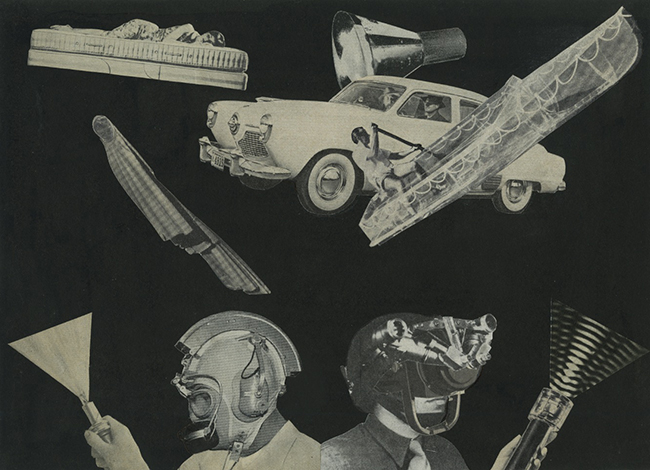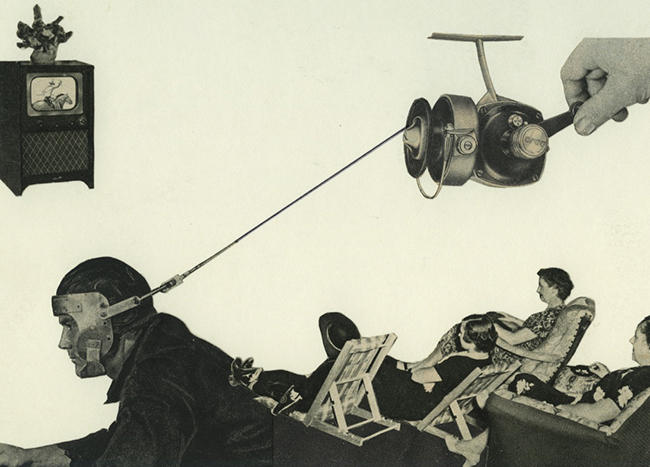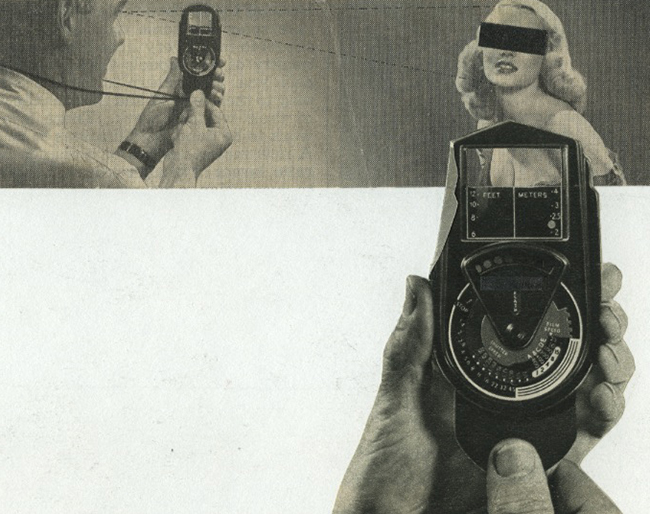David Stairs
“Tool hedonism is in ascendance.” —J. Robert Oppenheimer

Imagine a world where waste is more significant than thrift, where advertising trumps taste, and where novelty is the be-all end-all of existence. Not hard, is it? You’re living the dream everyday. In Amusing Ourselves to Death, Neil Postman’s 1985 look at the effects of television on society, entertainment came under scrutiny as a real but questionable substitute for public discourse. Had Postman lived long enough, he might have entitled the sequel Designing Ourselves to Death.
Humans spend an astonishing amount of time re-inventing kitsch. This has not always been the case. At the beginning of the Industrial Revolution, the goal was to find ways to produce manufactured goods quickly and in volume. Usually these artifacts were durable goods, things like wooden clocks, Springfield rifles, or Michigan axes. As advertising morphed into universal marketing the pursuit of short-term gain expanded exponentially. Think of the trivia manufactured to celebrate Queen Victoria’s Golden Jubilee in 1887.
Today, those things once considered debased are now valued collectibles, with the items in your friendly neighborhood Dollar Store standing in for an idea of what I call “ephemera drift.” And I’ll give you a hint: it’s not diminishing. Need a way to charge your phone while jogging? We’ll find it. Have a problem cleaning your cat’s litter remotely? There’s gotta be an app for it. Dislike the fact your scented garbage bags don’t look as nice as they smell? We can fix that, no problem. Everyday the nugatory items of unregulated invention hold court on the pages and websites of the design press. The clever, the beautiful, and the inane all compete for investment capital and retail attention as design has become sine qua non for product success in the public mind.
“Since there is nothing desirable which has not been planned, the city child soon concludes that we will always be able to design an institution for our every want. He takes for granted the power of process to create value.” —Ivan Illich

As crazy as this seems just remember that the 20th century gave rise to stellar inventions like antibiotic sweaters, chickens fitted with glasses (a defense against fighting), and radioactive golf balls. Fortunately, many of these ideas were clever enough to be self-defeating. Before the days when the government regulated all fissionable materials, even the glaze on Fiesta Ware, looking for slightly hot strays with a Geiger counter might have seemed like a nifty idea to wayward duffers. But a warehouse full of gently pulsating golf balls could pose more than a mild security threat if the volume of radioactive material reached critical mass.
So, why do people talk about feature drift instead of material thrift? Why does planned fallibility consistently outrank designed durability? As a society that reveres freedom to the point of self-destruction, we do tend to err on the side of excess. I’m not talking about controlling idea exchange. We’ve already seen grass root rebellions at the mere suggestion of internet regulation. I believe that the free exchange of ideas, as in scientific research, is necessary. But any form of regulation, especially of free enterprise, is considered taboo. This is unfortunate. Much that is designed is neither good nor necessary, yet the license to do as we please for the sake of profit permits us to shit our pants, a fundamental aspect of human socialization? Chip designers, for example, have been brilliant at fitting more transistors onto the same amount of space by layering and micro photoengraving. They can’t prevent the use of their invention to control remotely-guided pizza delivery heli-drones, and would probably prefer not to think about it, but someone should. I’m talking about a social agenda that requires the formal review of ideas in a better forum than the commercial anarchy of Kickstarter, ideas vetted not only as fashionable but for long-term usefulness, materials and manufacturing efficiency, chemical and social benignity, and cultural originality. As it is, far too many inventions have only to pass a profitability hurdle before being manufactured. And, to a large extent, this has to do with how our economic models control and exploit our creativity.
“These days artists take manufactured objects and make waste while engineers convert unformed matter into the most marvelous things. Is it any wonder artists have become obsolete?” —Bertrand Russell

As the so-called 3D printing revolution expands with the introduction of 3D scanning technology, the discussion seems to be more about the unbridled ability to reproduce any object in cheap materials rather than the potential problems with waste, trademark infringement, and environmental damage. At the Bauhaus apprentice students in the Foundation course were responsible for their own materials. If they wasted them, they paid for it. A century later, we who live in a less bountiful world could take a page from the Bauhaus philosophy. The detritus of spurious invention is everywhere around us, from unrecyclable packaging to disposable pens-razors-pregnancy tests. And neither the inventors, nor the manufacturers or the end-users take responsibility for ultimate disposal. When we celebrate the genius of industrial design at Design Sponge, FastCo, or Core 77, let us stop to say a small prayer for future generations. Scientists of the 25th century will be challenged by the sudden explosion of trash that occurs around the year 1900 in the archaeological record, if the diggers of the middle future can even separate the significant from the ephemeral.
“Industrial design creates a world of things that resist insight into their nature… This type of design tends to reinforce a non-inventive society in which the experts find it progressively easier to hide behind their expertise and beyond evaluation.” —Ivan Illich

Need a left-handed red, white, or blue burger flipper anyone? Do your smart socks tell you all you need to know about your workout? Need to combine rituals when you arise because you routinely squeeze that extra ten minutes out of your alarm clock each morning? We’ve got you covered. But please, don’t hold me responsible if I go on a rampage with my 3-D printed gun. I will only be exercising my right to freedom of expression.
David Stairs is the founding editor of Design-Altruism-Project. Illustrations are by the author.











Leave a Reply
You must be logged in to post a comment.